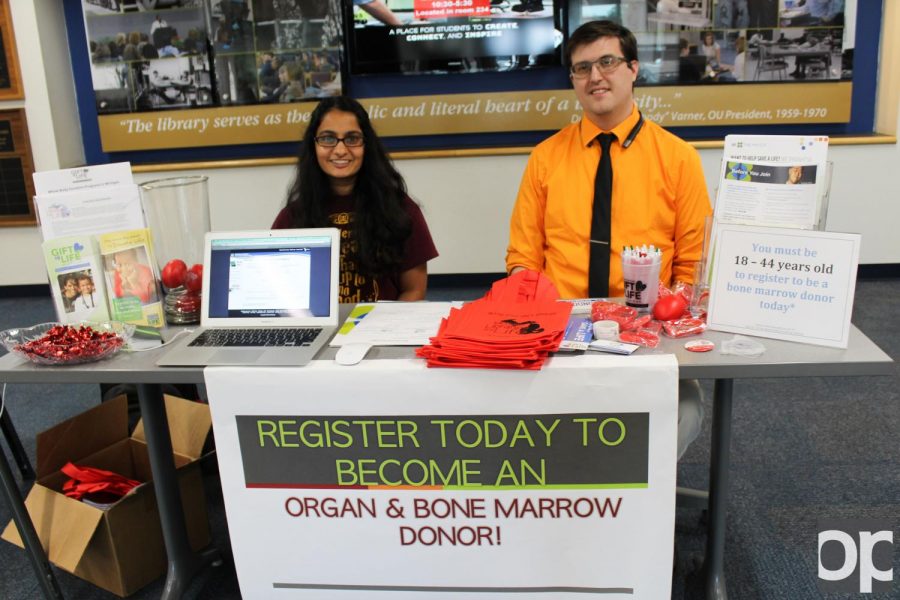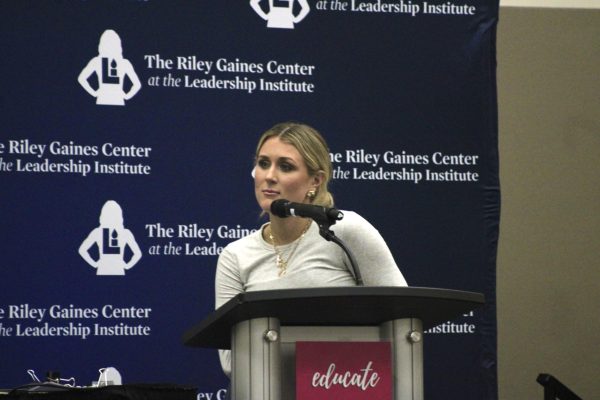OUWB works to educate on reality of bone marrow donations
The OUWB registered 39 organ donors and 50 bone marrow donors during this annual drive.
In January 2017, second-year Oakland University William Beaumont School of Medicine (OUWB) student Joseph Adamson was told his 22-year-old brother Nick had been diagnosed with a rare form of leukemia and had less than two years to live.
Nick’s only chance rested on a bone marrow transplant, but finding a donor was not going to be an easy. Joseph had already registered through an OUWB drive; however, the brothers were only a 50 percent match.
Nevertheless, it was deemed that since they were siblings, the chance of success was good. In June, Joseph was able to give a piece of himself to his brother and in return, grant him a second chance at life.
Today, Nick Adamson is in remission and has been able to return to everyday life. He is currently searching for a job.
The sixth annual OUWB Organ and Bone Marrow Registration Drive was held from Monday, Oct. 2 to Wednesday, Oct. 4 through the combined efforts of the OUWB Student National Medical Association, the OU Minority Association of Pre-Medical Students, OU Cancer Awareness Society, OUWB Diversity and Inclusion and the OUWB Medical Library.
The collective mission was to get as many people as possible from OU and the surrounding communities to register.
“I chose to become an organ donor after one of my friends from college died in a motorcycle accident,” said Caryn Reed-Hendon, Director of OUWB Diversity and Inclusion. “He was a registered organ donor and because of his death he was able to allow so many others to live. So as tragic as that was with his passing, what he was able to give to others was truly remarkable.”
Registering for organ donation is as simple as filling out a form, while bone marrow registrants have only the additional step of a cheek swab.
According to Stephanie Swanberg, an assistant professor and medical librarian in the Department of Biomedical Sciences, it is absolutely critical for every eligible person to register to be a bone marrow donor because of the complexity in finding two people who are actually a match.
There is especially a need for minority ethnicities, since age and ethnicity factor into the possibility of a match.
In fact, Swanberg reported that because of the difficulty in finding matches, it is more likely than not that a registrant will never end up being called in his or her lifetimePerhaps the most common misconception with bone marrow donation, and exactly the reason why most people decline to register, is that a large needle will have to be inserted into one’s pelvic bone in order to collect the marrow.
However, the truth is that the majority of bone marrow donors are able to donate simply through having blood drawn. The medical terminology for this is peripheral collection, and it works by passing the blood through a machine that separates out the blood-forming cells and returns the rest of the blood directly back into the donor.
According to Reed-Hendon, OUWB registered 39 organ donors and 50 bone marrow donors during the drive.
Those who wish to register for organ donation can do so at giftoflifemichigan.org, and anyone interested in registering for bone marrow donation can do so at bethematch.org.
Find an in-depth look of the Adamson brothers’ full story in next week’s issue.










